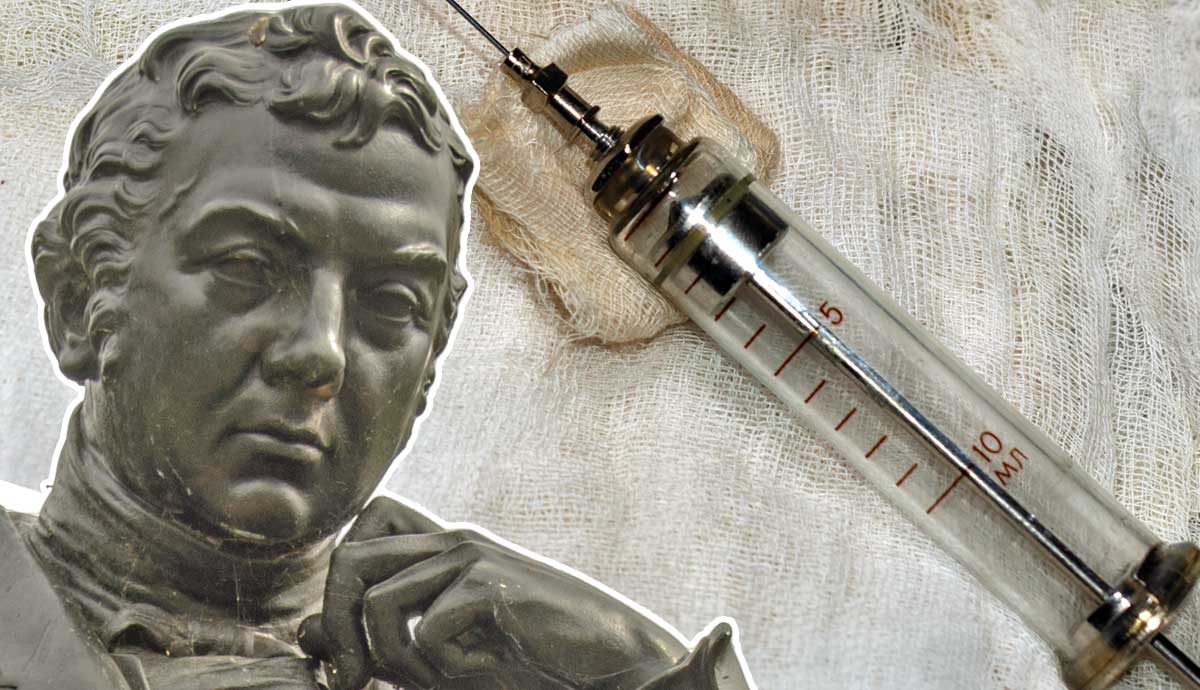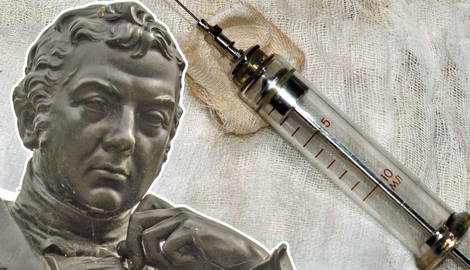
Cowpox is from the same group as smallpox. Today it is not a common occurrence, and it was named because it predominantly affects cows, although it is much more common with cats. Cows will get blisters or ulcers on their udders. Cowpox can also be transmitted to humans who are near an infected animal. Although it was sometimes fatal in humans, the death rate was low – only at a rate of 3% at most.

It was observed in the 1700s that many times farm hands who were infected by cowpox were immune to smallpox. This is where the idea of immunization first began, with using cowpox to protect others from the much deadlier smallpox. In fact, “vaccination” comes from the Latin word vaccinus which translates to “of or from the cow.” While there were inoculations or variolations from smallpox, at the time they were very different than what we picture as a traditional vaccine. Inoculation was the exposure to a virus or disease. Variolation was a form of inoculation that used material from the disease.
Edward Jenner is credited in the creation of the first vaccine, how they work and the first version of a smallpox vaccine. Jenner wasn’t the first one to use cowpox to inoculate against smallpox. Englishman Benjamin Jesty had gotten cowpox by 1774 and gave it to his wife and children to prevent their deaths during a smallpox outbreak. However, he was the first one to work on it, testing it on multiple people and making the knowledge widely known.
Who Was Edward Jenner? Creator of the First Vaccine

Edward Jenner was born on May 17, 1749, in England. Like others of the time, he was inoculated against smallpox by variolation—a method using material from a person who was recently variolated or infected with smallpox themselves using parts of the scabs which were powdered and rubbed into scratches on the skin. This is different than a vaccination or vaccine that Jenner would later invent.
The death rate for this method was 1-2%, which was still better than getting the infection naturally, which resulted in death about 30% of the time. This varied depending on the type of smallpox and ranging in fatality rates of 1-100%, with hemorrhagic smallpox only being 3% of the cases, but having a 100% fatality rate.
This method of inoculation was used in England, North America, China, India, parts of Africa, and the Middle East in the late 1600s through the early 1700s. While it protected Jenner against smallpox, the variolation had a negative impact on his health for the rest of his life.
Nonetheless, he led a full life – in 1788 he married Catherine Kingscope and they went on to have three children. Jenner subsequently went on to become a doctor and surgeon after going to the University of St. Andrews in Scotland in 1792. For his work he became a member of many societies including the American Academy of Arts and Sciences in 1802 as a foreign honorary member, the American Philosophical Society and Royal Swedish Academy of Sciences. He died of a supposed stroke January 25, 1823, at 73.
Smallpox & Vaccinations

Smallpox had symptoms that include a fever, nausea, an aching body, and pustules or “pox” that is present in all the pox diseases. Like other diseases, it was contagious and sufferers would experience occurrences or outbreaks in different places.
Smallpox was used by the British forces against the Indigenous tribes in the French and Indian War and by the American government to get rid of tribes. Since they didn’t have the preexposure and immunity that the Europeans did, it devastated the population. Outbreaks in Boston during the revolution led to a pause in fighting after the Battle of Bunker Hill because Washington feared the lack of immunity among his soldiers. He stated that, “finding the smallpox to be spreading much and fearing that no precaution can prevent it from running thro’ the whole of our Army, I have determined that the Troops shall be inoculated.”
When Jenner created the vaccination, it became popular and of high value. The cost of inoculation meant it was not available for everyone – many who would not have been able to afford the treatment offered themselves to Jenner as test subjects. He published his test results in a 1798 pamphlet titled, An Inquiry into the Causes and Effects of Variolae Vaccinae, a Disease, Discovered in Some of the Western Counties of England Particularly Gloucestershire, and Known by the Name of Cow Pox. Jenner was eventually given 30,000 pounds by the British Parliament for his vaccination (which would be about 2,000,000 pounds today).
Cowpox Today: Is it Still Around?

Thankfully, today we do not have to worry about the contagious disease of cowpox because of the highly effective vaccination programs. In 1980, the World Health Organization (WHO) declared that smallpox had been eradicated after the last natural case in October of 1977, although that wasn’t the last death from the disease. Janet Parker, who worked as a medical photographer, died in 1978 after somehow contracting the disease at the University of Birmingham Medical School.
While the WHO has recommended countries destroy the samples of smallpox previously used for research because the disease is eradicated, as of 2024 this still hasn’t been completed – strains of the virus have been found in different envelopes and vials in various locations. As much as it might seem a toxic virus today, without cowpox, it would have been much harder to protect the population against smallpox, and many more people might have died from its effects.









